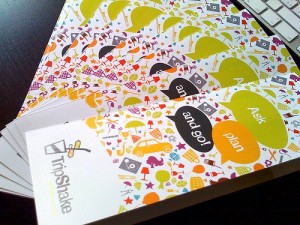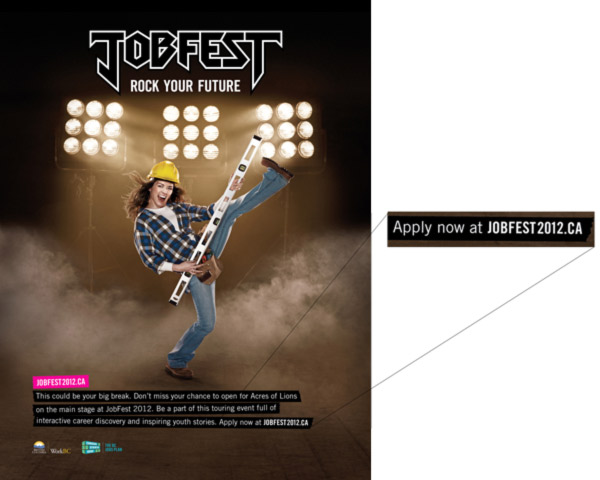Sentence Fragments in Copywriting: Examples of Good Use

Some might think of sentence fragments as incomplete pieces of a larger whole, but they can be quite effective on their own.
Photo credit: Jennuine Captures
In school, we’re taught never to write in sentence fragments because they represent incomplete thoughts. But that’s not exactly true, as some fragments can relay just as much information as a full sentence but in a shorter amount of time.
Sentence fragments are acceptable to use when your intentions are clear. That’s because good marketing draws the reader in, quickly relays information using a casual tone and provides emotional resonance–all of which are possible with sentence fragments. Here are a few examples of how fragments can actually work to your advantage.
Fragments Create Rhythm
Using the same sentence length for all of your writing is both boring to read and hear. Successful advertising requires a good sense of rhythm–using a variety of both short and long sentences to create variation in timing. Since fragments are short, they create natural breaks in the rhythm of your writing.
For example, the following writing is long, dull and without rhythm:
At Hank’s Auto, we know how important it is to keep your car maintained, which is why we came up with the Oil Change Plus program. Once you have accumulated five stamps on your card, you’re entitled to a free oil change.
Instead of using two long sentences to deliver your message, try adding some fragments to make the copy more efficient, casual and effective.
At Hank’s Auto we, know how important it is to keep your car maintained, which is why we came up with the Oil Change Plus program. Five stamps, free oil change. It’s that easy.
Fragments are More Conversational
You’ve probably heard that copywriting should be casual and conversational—but conversations are rarely told all in complete sentences. Instead, we chop up sentences into smaller phrases or words to quickly relay information. When you say “Happy Birthday” to someone, they automatically fill in the subject and predicate of the sentence and understand that it means “I hope you have a happy birthday.”
A carefully placed sentence fragment can make it sound like you’re actually having a conversation with your audience. An example:
We’re so excited about our new flavor of ice cream, we want to give you a free scoop. No, seriously!
The fragment at the end sounds like the writing is responding to something the reader might be thinking, which makes the copy sound more conversational and authentic.
Fragments Emphasize Points
A sentence fragment sticks out in a sea of complete sentences. Use this to your advantage and give your marketing campaign more emphasis and drama. For example:
Community Credit Union has been called many things over the years. Forward-thinking. Eco-Friendly. Convenient.
The sentence fragments emphasize the best aspects of this company and give the points more weight.
Fragments can also be used to reaffirm previous points instead of standing out on their own.
If you don’t like your new custom paint job, we’ll paint it back for free. Guaranteed.
In this example, the sentence fragment acts as a facilitator by showing that the sentence before it is actually a company policy and not just an empty promise. However, writing it as a fragment instead of attaching it to the end of the previous sentence gives it more weight and emphasis.
Fragments Save Space

Rather than spelling out exactly what the company does, the covers of these brochures use imperative fragments to save space.
Photo Credit: Antonio Bonanno
Fragments help you save precious advertising space by getting across the same meaning in fewer words. Instead of a long paragraph detailing the special features for your product, use a short list with fragments. However, when writing lists using fragments, make sure every bullet point is a fragment. Do not mix complete sentences and fragments in the same list.
Fragments are good for headlines and subheadings because these are the areas where you want to quickly deliver information. You’d never write “Our Company Has Used Cars for Sale” for a headline–instead, you’d write “Used Cars for Sale.”
Using Imperative Fragments
Imperative fragments are sentences which forgo a subject to instead talk directly to the reader, implying that the reader is the subject. “Call today!” is an imperative because there’s no subject, only the predicate. However, since the speaker is clearly giving a direction to someone, the reader automatically identifies himself as the subject of the sentence. This pulls readers into your copywriting since they are now more invested in your message and know it’s speaking directly to them.
Imperatives can be used in a number of different ways to invoke a more conversational tone and create a personal connection with the reader. For example, imperatives can be sympathetic such as “Feeling down? Harsens Medical Group can get you back on your feet.” Taking away the subject makes the copy seem much more concerned with the reader, the same way a family member or friend might ask how they feel.
Using Exclamations
Exclamations are small fragments (usually just a single word) that are used to add sudden bursts of emotion to your copy. Examples might include “Wow! We’re having our biggest sale yet” or “Congratulations! You’ve been selected to receive a free trial offer.”

This print ad uses a prominent exclamation (“WOW!”) to excite the reader right away.
Exclamations are primarily used to invoke excitement, but they can be attached to other emotions in copywriting. For example, exclamations can make the audience feel anxious, such as “Hurry! This offer only lasts for a limited time,” or stir up negative emotions like “Who wants a house filled with termites and cockroaches? Gross!”
Creating a Better Call to Action
Nobody likes being told to do and they certainly don’t want a long list of things to accomplish. When giving a customer a call to action, form it as a fragment. “Visit our Website!” is more effective than “We want you to visit our website for more information.” A fragment makes your call to action seem like a direct order instead of a suggestion.

This ad uses a sentence fragment to make its call to action straight and to the point.
Photo Credit: Ads of the World
Think of yourself like an army drill sergeant—your orders should be clear and brief so that they are carried out without hesitation. The more you add to a call to action, the more the reader has to interpret, which adds an obstacle between the reader and the goal you want him or her to accomplish.
Conclusion
The rules of grammar as you learned them in school were intended for formal writing. While much of what you learned is still applicable to copywriting, you need to know when to break certain rules like “no sentence fragments” in order to create good examples entertaining, dynamic and effective advertising.
Posted in Copywriting
Don`t neglect your friends, share this right away.





Leave a Reply